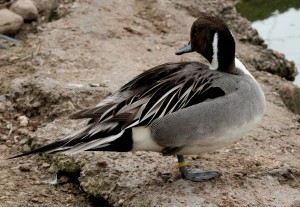 The Highlands of Scotland are an ideal place to watch wildlife at any time of year, and birds in particular are a firm favourite with our visitors. Within 30 miles of Inverness and Loch Ness there are nine RSPB reserves and most are very accessible. Some of you may be following BBC Winterwatch from the NTS owned Mar Lodge Estate, which covers a significant portion of the Cairngorm National Park. This beautifully wild area of Scotland is very popular with those that love the outdoors with hill walking and climbing in the summer, along with skiing and mountaineering in the winter. It also provides the wildlife watcher with opportunities to see many species, some are harder to spot than others, but that’s what makes it all the more special.
The Highlands of Scotland are an ideal place to watch wildlife at any time of year, and birds in particular are a firm favourite with our visitors. Within 30 miles of Inverness and Loch Ness there are nine RSPB reserves and most are very accessible. Some of you may be following BBC Winterwatch from the NTS owned Mar Lodge Estate, which covers a significant portion of the Cairngorm National Park. This beautifully wild area of Scotland is very popular with those that love the outdoors with hill walking and climbing in the summer, along with skiing and mountaineering in the winter. It also provides the wildlife watcher with opportunities to see many species, some are harder to spot than others, but that’s what makes it all the more special.
This week, Ray tells us about the importance of bird baths and feathers…
Feathers are essential for birds to keep them insulated against the cold, make them waterproof and for aggressive or friendly display. For all these reasons it is essential that the feathers are kept in tip top condition and this includes preening them, particularly after washing. This is why it is important to keep bird baths going at all times of the year. To do this the winter cold and ice can cause problems but there are various ways to negate this. Regular changes will work as will soft balls kept floating in the water. What is also important about bird baths is that they have sloping margins so that different depths of water are available to the birds. Obviously a blackbird, for example, will need a different depth of water to wash in than a house sparrow. You can purchase bird baths from garden centres and they vary in design almost as much as bird tables or nest boxes. They also vary considerably in price and over the years, having tried out many designs, I would still recommend the simplest and cheapest one. My greatest success with them has been to use an up turned dustbin lid as this gives an ideal range of water depth.
Feathers can be very impressive to us and I recall the first time I ever saw a male peacock in display with that magnificent tail. There are probably no native birds that can have such attractive feathers but there are three with relatively long tail feathers and these can all be seen around Inverness and beyond. The cock pheasant, not really a native bird, is one and few people can help but admire the elongated tail feathers. These vary in length and, to a certain extent, colour and no wonder one of the local names for this bird is the “longtaIl”. Unlike the peacocks’ feathers, which are considered unlucky to bring indoors, the cock pheasants’ tail feathers are often used as a decoration. These elongated tail feathers are not difficult to obtain especially when the bird moults.
There are two other birds, both natives, where the long tail is indicated in their common names and these are both ducks namely the pintail and the long-tailed duck. The pintail can be seen at a number of places, mainly coastal, and one of the best is, for some unknown reason but presumably the food, is just west of Inverness in the firth by Bunchrew. I have seen a maximum of around thirty there and they seem to keep to a discreet area and do not normally mix with other ducks. Their food is a mixture of plant and animal material so perhaps there is a combination of these at that area which attracts them. I have also seen them as Alturlie Point just to the east of Inverness but again, for some reason, they tend to keep to themselves. The drake pintail is very attractive with its long, thin neck with a chocolate brown head contrasting with the white lower neck and yellow patch towards the tail. The photograph shows how elegant and striking these drakes can be. Fewer than 50 pairs nest in Scotland but winter visitors can be up to 9,000 birds. The other duck is one of the seaducks, namely the long-tailed duck, and, in contrast to the pintail, they have never bred in the UK. However, this is more than compensated for by the huge numbers that visit Scotland in the winter that can reach around 15,000 individuals. As with the pintail it is only the male that has the elongated tail feathers with two central elongated feathers. Interestingly one of its local names is Sea Pheasant.
Tags: highland wildlife
